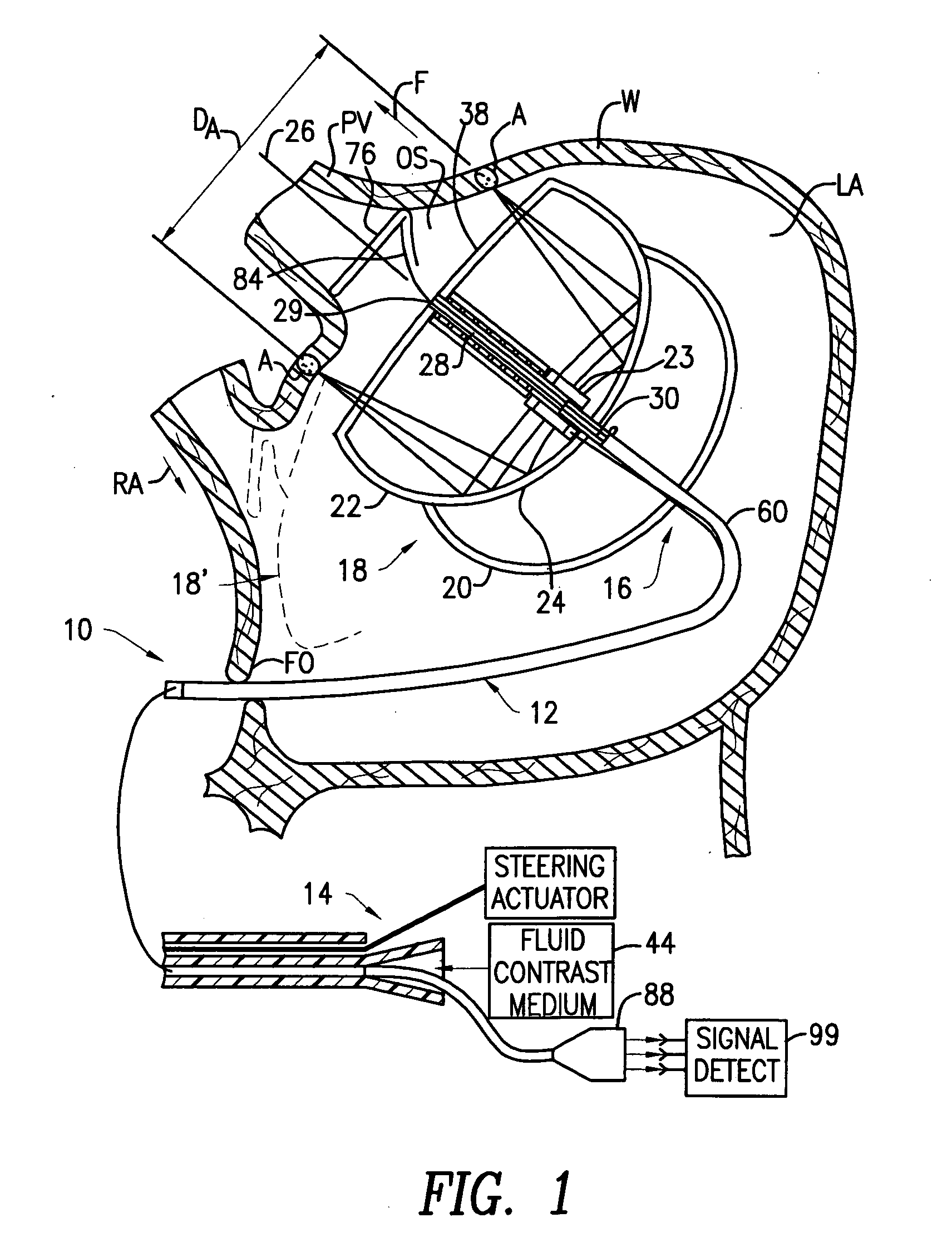Miniature circular mapping catheter
a miniature, sensor technology, applied in the direction of catheters, applications, therapy, etc., can solve the problems of limiting the placement of electrodes, the configuration of the transducer array and associated structures, and the difficulty of making the device collapse to a small diameter, etc., to achieve the formation of a ring-like lesion or the sensing of electrical potential at numerous locations
- Summary
- Abstract
- Description
- Claims
- Application Information
AI Technical Summary
Benefits of technology
Problems solved by technology
Method used
Image
Examples
second embodiment
[0042]A sensor probe in accordance with the invention has a composite body 200 (FIG. 5) including a tubular metallic shaft section 202 which may be formed from a stainless steel tube of the type commonly used to form hypodermic needles. Shaft section 202 defines an interior bore 203 (FIG. 6). Desirably, shaft section 202 has an outside diameter Ds (FIG. 6) on the order of 1.25 mm or less, more desirably about 1 mm (0.040 inches) or less, and most preferably about 0.9 mm (0.035 inches). Preferably, shaft section 202 extends throughout the majority of the length of probe 200. For example, shaft section 202 may be on the order of 140 cm (55 inches) long.
[0043]A distal section 206 is mounted to the distal end 204 of shaft section 202. Distal section 206 includes a wire core 210 (FIG. 7) with a dielectric, biologically inert polymeric covering 212 overlying the core. The core desirably is formed from a metal such as a nickel-titanium alloy which can be formed to a preselected shape and w...
third embodiment
[0045]A sensor probe 300 in accordance with the invention is shown in FIG. 9. Sensor probe 300 has a proximal section 302 and a distal section 304. Proximal section 302 is approximately 90 percent of the length of sensor probe 300. Proximal section 302 includes a stainless steel hypotube coated with Teflon. The stainless steel hypotube provides pushability to the sensor probe 300 and transfers maximum force from a handle 306 to the opposite end of sensor probe 300. A core wire (not shown) runs through the proximal twelve inches of the hypotube to prevent it from collapsing during procedural manipulation. A plurality of electrodes (not shown) extend around a portion of a nitinol wire 312 (FIG. 10) that forms a loop 324 (FIG. 11). The electrodes are electrically insulated from nitinol wire 312. One example of a manner in which the electrodes may be insulated from nitinol wire 312 may be seen in FIG. 3 where the nitinol wire is designated by numeral 94. As seen in FIG. 3 insulated wire...
PUM
 Login to View More
Login to View More Abstract
Description
Claims
Application Information
 Login to View More
Login to View More - R&D
- Intellectual Property
- Life Sciences
- Materials
- Tech Scout
- Unparalleled Data Quality
- Higher Quality Content
- 60% Fewer Hallucinations
Browse by: Latest US Patents, China's latest patents, Technical Efficacy Thesaurus, Application Domain, Technology Topic, Popular Technical Reports.
© 2025 PatSnap. All rights reserved.Legal|Privacy policy|Modern Slavery Act Transparency Statement|Sitemap|About US| Contact US: help@patsnap.com



